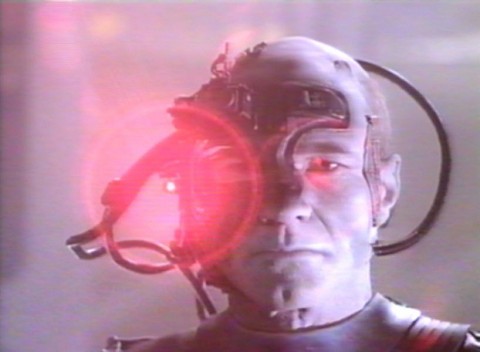May 9, 2010
DARPA looking to REPAIR damaged brains.
Source: Wired
Hardwired for real. DARPA, the evil geniuses of the US military machines, announced on 06-May-2010 that $15M US will be going to four institutions to study way to accelerate repairs of brain injuries. The project is aptly called “Reorganization and Plasticity to Accelerate Injury Recovery (REPAIR)” (link to presolicitation page).
DARPA seeks new methods for analysis and decoding of neural signals in order to understand how neural-based sensory stimulation could be applied to accelerate recovery from brain injury. Ultimately, it is desired to develop models of neural codes and temporal patterns that can provide an ability to interpret and predict changes in neural organization through plasticity at multiple scales of measurement.
A document is available there (MS-Word/XML format) for those who need some military-procurement-related reading material.
Look into the light. The idea behind the REPAIR project is to use chips in areas where physical damage has occurred. The chips will act as replacements for damaged areas and use light pulses to transmit signals:
But what experts can’t yet do, (Krishna) Shenoy said, is alter those electrical pulses to turn brain circuits on or off. His team will use optogenetics, an emerging technique that involves emitting light pulses to precisely trigger neural activity, to develop an implanted TBI treatment device.
“Before this, emitting light into the brain would be like hitting it with a hammer,” Shenoy said. “What we’re doing now is pin-pointing a single neuron, and that neuron will naturally change its activity depending on the cue.”
The implants developed by the project will likely be composed of electrodes or optical fibers, and will sit on the surface of the brain. They’ll read electrical signals from neurons, and deliver appropriate light pulses to stimulate other brain regions in response. The implants would allow the brain to operate normally, by acting as substitutes for areas that were damaged or “unavailable.”
But why stop at “replacing” when you can “upgrade?” How about a math co-processor? Maybe an nVidia GPU for your vision? Do you multitasking types want a multi-core CPU for more multitasking?
No word yet on if stem cells are being studied to rebuild those same damaged areas.
Beyond beta-tests. Shenoy is looking to have animals with implants in four years. After that…
And while Darpa’s interested in ailing vets, the implants could have broad civilian application, …
You know what THAT means…






